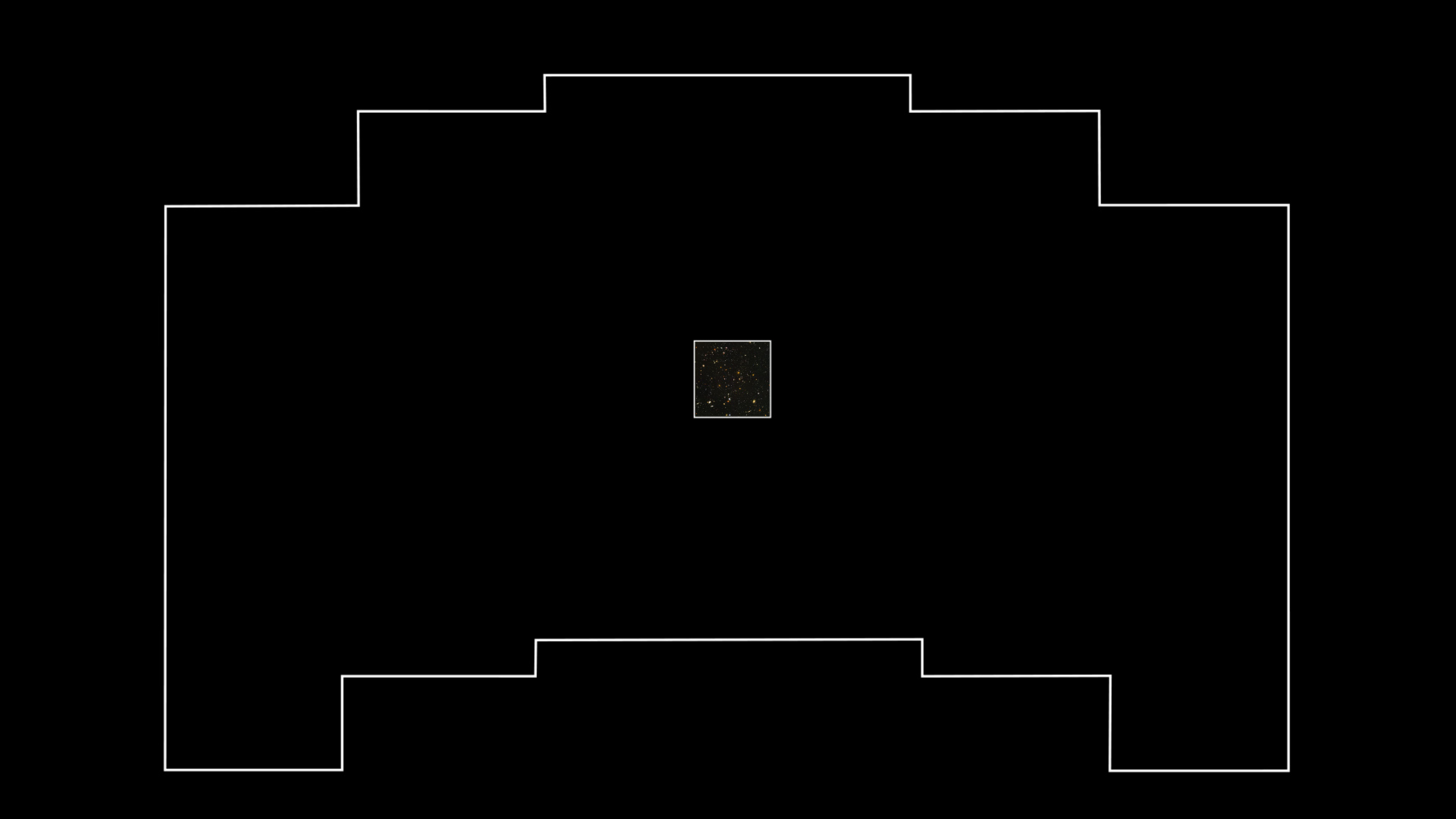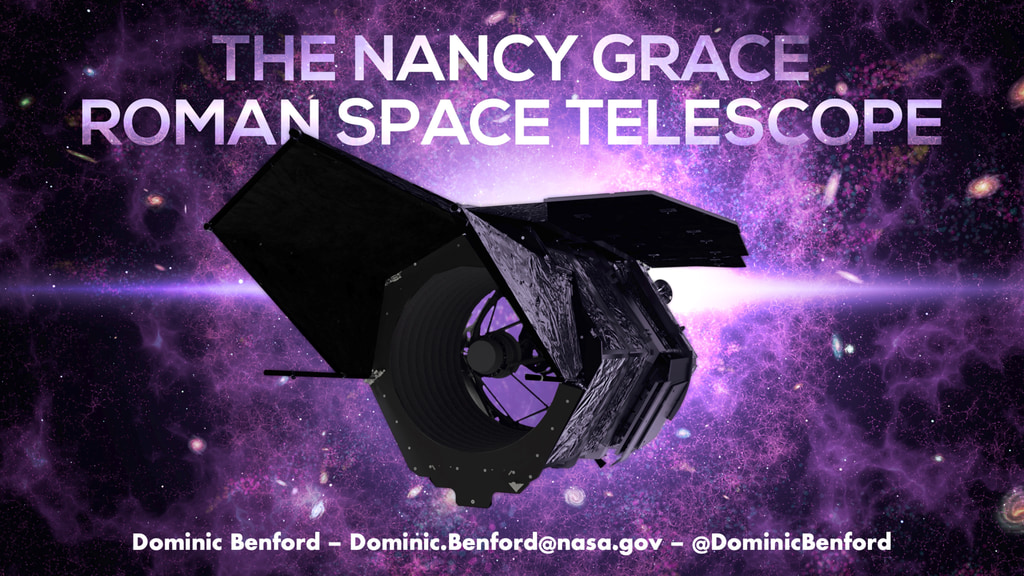Simulated Image Demonstrates the Power of NASA’s Nancy Grace Roman Space Telescope
Watch the video to learn more about the Roman Space Telescope's simulated image.
Credit: NASA's Goddard Space Flight Center
Music: "Flight Impressions" from Universal Production Music
Watch this video on the NASA Goddard YouTube channel.
Complete transcript available.
NASA’s Nancy Grace Roman Space Telescope will capture the equivalent of 100 high-resolution Hubble images in a single shot, imaging large areas of the sky more than 1,000 times faster than Hubble. In several months, the Roman Space Telescope could survey as much of the sky in near-infrared light—in just as much detail—as Hubble has over its entire three decades.
Although Roman has not yet opened its wide, keen eyes on the universe, astronomers are already running simulations to demonstrate what it will be able to see and plan their observations.
This simulated image of a portion of our neighboring galaxy Andromeda (M31) provides a preview of the vast expanse and fine detail that can be covered with just a single pointing of the Roman Space Telescope. Using information gleaned from hundreds of Hubble observations, the simulated image covers a swath roughly 34,000 light-years across, showcasing the red and infrared light of more than 50 million individual stars detectable with Roman.
While it may appear to be a somewhat haphazard arrangement of 18 separate images, the simulation actually represents a single shot. Eighteen square detectors, 16-megapixels each, make up Roman’s Wide Field Instrument (WFI) and give the telescope its unique window into space.
With each pointing, the Roman Space Telescope will cover an area roughly 1⅓ times that of the full Moon. By comparison, each individual infrared Hubble image covers an area less than 1% of the full Moon.
Roman is designed to collect the big data needed to tackle essential questions across a wide range of topics, including dark energy, exoplanets, and general astrophysics spanning from our solar system to the most distant galaxies in the observable universe. Over its 5-year primary mission, Roman is expected to amass more than 20 petabytes of information on thousands of planets, billions of stars, millions of galaxies, and the fundamental forces that govern the cosmos.
For astronomers like Ben Williams of the University of Washington in Seattle, who generated the simulated data set for this image, Roman will provide a valuable opportunity to understand large nearby objects like Andromeda, which are otherwise extremely time-consuming to image because they are so big on the sky.
The Roman Space Telescope could survey Andromeda nearly 1,500 times faster than Hubble, building a panorama of the main disk of the galaxy in just a few hours.
Sixty-second, social-media-friendly version of the above video.
Credit: NASA's Goddard Space Flight Center
Music: "Flight Impressions" from Universal Production Music
Complete transcript available.
Old WFIRST version of video
Credit: NASA's Goddard Space Flight Center
Music: "Flight Impressions" from Universal Production Music
Watch this video on the NASA Goddard YouTube channel.
Complete transcript available.
Old WFIRST version. Sixty-second, social-media-friendly version of the above video.
Credit: NASA's Goddard Space Flight Center
Music: "Flight Impressions" from Universal Production Music
Complete transcript available.

**Updated version uses Roman name.
A simulated image of part of the Andromeda galaxy highlights the high resolution, wide field of view, and unique footprint of NASA’s upcoming Nancy Grace Roman Space Telescope. The image represents the data that could be collected in a single pointing using Roman’s 18-detector, 300-megapixel Wide Field Instrument. Roman will have 100 times the field of view as Hubble, and the same resolution as Hubble in the infrared.
Credit: NASA, STScI, and B. F. Williams (University of Washington)

A simulated image of part of the Andromeda galaxy highlights the high resolution, wide field of view, and unique footprint of NASA’s upcoming Wide Field Infrared Survey Telescope (WFIRST). The image represents the data that could be collected in a single pointing using WFIRST’s 18-detector, 300-megapixel Wide Field Instrument. WFIRST will have 100 times the field of view as Hubble, and the same resolution as Hubble in the infrared.
Credit: NASA, STScI, and B. F. Williams (University of Washington)

This simulated image showcases the red and infrared light of more than 50 million stars in Andromeda, as they would appear with WFIRST. Pull-out details show various mixes of young blue stars, older redder stars, dust clouds, and background galaxies that would be visible in a WFIRST image. Each detail covers an area equivalent to a full image from Hubble’s infrared camera.
Credit: NASA, STScI, and B. F. Williams (University of Washington)

Same as above, with labels.
Credit: NASA, STScI, and B. F. Williams (University of Washington)

A composite figure shows the region of Andromeda covered by the WFIRST simulation. WFIRST would be able to image the main body of Andromeda in just a few pointings, surveying the galaxy nearly 1500 times faster than Hubble.
Credit: Simulated WFIRST image: NASA, STScI, and B.F. Williams (University of Washington); Background: Digitized Sky Survey and R. Gendler; Moon: NASA, GSFC, and Arizona State University)

A composite figure shows the region of Andromeda covered by the Roman Space Telescope simulation. Roman would be able to image the main body of Andromeda in just a few pointings, surveying the galaxy nearly 1500 times faster than Hubble.
This version has updated labels to show Roman instead of WFIRST
Credit: Simulated Roman image: NASA, STScI, and B.F. Williams (University of Washington); Background: Digitized Sky Survey and R. Gendler; Moon: NASA, GSFC, and Arizona State University)

Same as above, with labels.
Credit: Simulated WFIRST image: NASA, STScI, and B.F. Williams (University of Washington); Background: Digitized Sky Survey and R. Gendler; Moon: NASA, GSFC, and Arizona State University)
For More Information
Credits
Please give credit for this item to:
NASA's Goddard Space Flight Center. However, individual items should be credited as indicated above.
-
Producer
- Scott Wiessinger (USRA)
-
Narrator
- Scott Wiessinger (USRA)
Release date
This page was originally published on Sunday, January 5, 2020.
This page was last updated on Wednesday, May 3, 2023 at 1:45 PM EDT.

